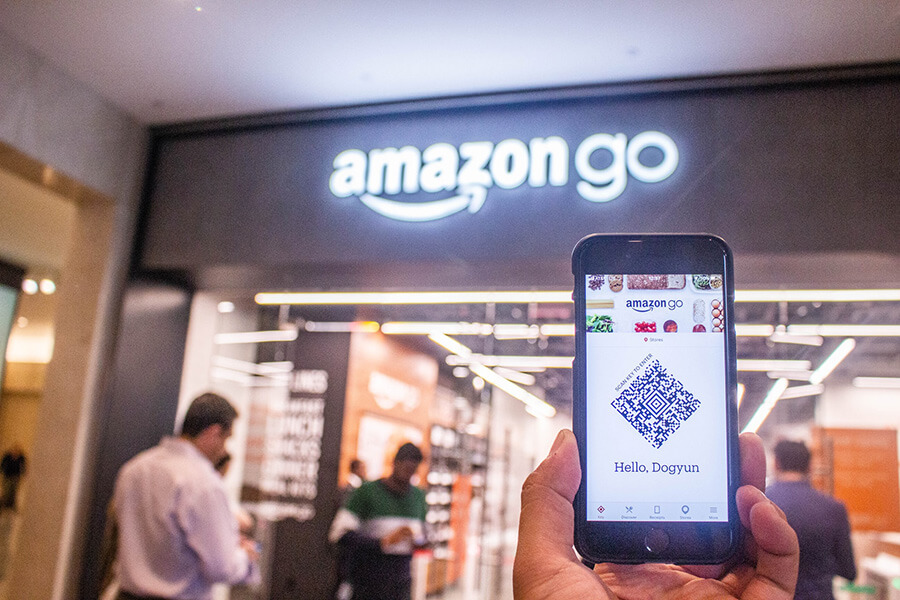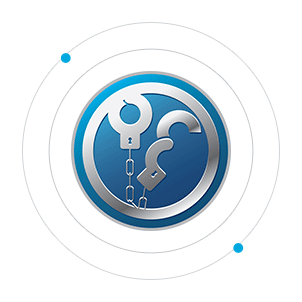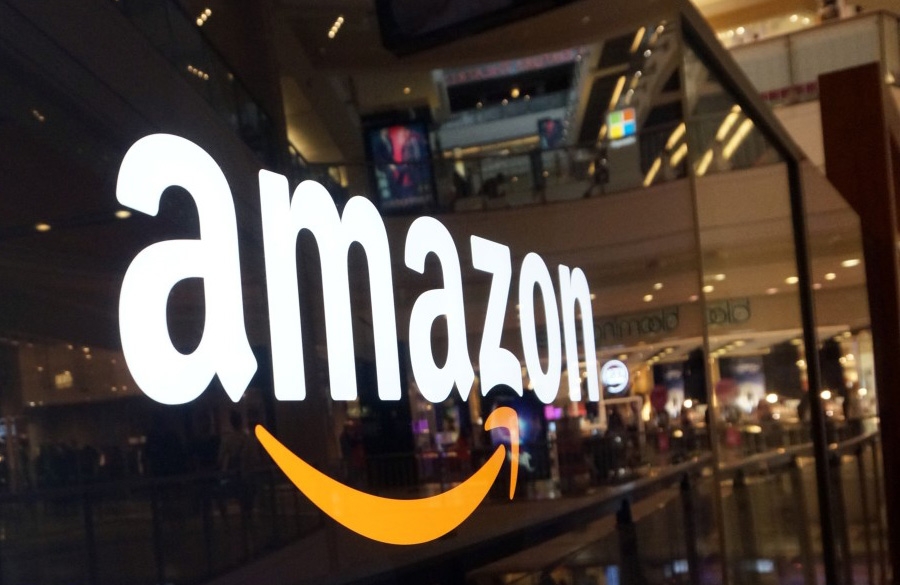Amazon Shipping Scam: How It Works
The list of Amazon scams continue to grow every day, the newest addition being the Amazon Shipping Scam. Amazon is one of the most widely used online retailers and the biggest e-commerce site, with over 2.5 billion visits each month. The main reason for Amazon's overwhelming popularity is its ease of use for consumers.
However, with this popularity comes a downside; scams aimed at bilking customers of the online retail giant. Besides the Amazon Jobs From Home approach, crooks have been hitting with a series of other fraudulent activities when it comes to shipping.
Scam Detectors Most Trusted Websites in Online Security
- Guard.io (100): Surf the web safely. Clean up your browser, remove malicious extensions and check for privacy violations.
- Incogni.com (100): Delete your personal data from the internet and protect against scams and identity theft.
- ExpressVPN (100) Stay secure and anonymous online - Best VPN Out There

How does the Amazon Shipping Scam work? There are four variations. Let's take a look:
Scenario 1: Shipment Is Sent To a Different Address
The first variation of the Amazon Shipping Scam is the “Deliberately Wrong Address” approach. Watch the video below to see this scam in action:
Essentially, this is how it works: you purchase an expensive item (camera, laptop, etc.) and pay for it. The third-party seller on Amazon sends a package to your city, but one that doesn't contain the product – only garbage or heavier useless items. The scammer sends the box to a different address – a commercial location – where the package is received with a signature by a receptionist.
Creating a record of delivery, the scammer has the job done. When you complain about the package never being handed over despite the notifications, the signature along with the confirmation of delivery is shown, making refund impossible.
Scenario 2: Amazon Can't Ship To Your Location
The second variation of the scam is the “Amazon can't ship to your location” approach.
In this case, once you try to purchase a low-priced item and put it in your online cart, the seller sends a notification saying that “the item can't be shipped to your location”. Amazon Shipping Scam 101.
After a day or two, you will get an email saying that the item has been shipped to your address and “Amazon requires you to wire the money”. Basically, the scammer diverts sales outside the checkout process. And, of course, he doesn't send the product.
Scenario 3: Incorrect Shipping Address
The third variation of the Amazon/DHL package scheme is a phishing scam. It is centered on Amazon or DHL shipping notifications, involving scammers sending you an email verification of your processed Amazon order but the email contains an incorrect shipping address.
The victim is then required to click a link in the email to correct the information; when the link is clicked malware is released onto the computer or device that captures passwords or private information.
Scenario 4: Tracking Number Attached
In the fourth variation of the Amazon Shipping scam, criminals claim to be from well-known shipment services. Examples are DHL, UPS, or FedEx, in which they include terms such as ‘tracking notification', tracking number', ‘pickup date', or ‘Processing completed successfully'. Just as in the above Amazon example, the zip file attached to the message contains malware.
Such schemes are the UPS Delivery Text Message Scam or the bogus FedEx Text Message.

Amazon Delivery Scam: How To Avoid
If you receive one of these order verification look at it closely. Are there misspellings? Is the domain in the email address from Amazon (i.e. [email protected])? If not, these are good indicators that the email is fraudulent.
To protect yourself, if you are in any way concerned about the validity of email verification from any online retailer, contact their customer service department; they will be able to verify if the communication came from them.
Shopping online is a convenient way to do business; however, make sure to take the proper precautions to protect your identity while doing so.

Acording to Amazon's Help page on their official website, here are a few tips for you to keep in mind:
“DO NOT send money—by cash, wire transfer, Western Union, PayPal, MoneyGram or other means, including by Amazon Payments—to a seller who claims that Amazon or Amazon Payments will guarantee the transaction, refund your funds if you are not satisfied with the purchase, or hold your funds in escrow.
DO NOT make a payment to claim lottery or prize winnings, or on a promise of receiving a large amount of money.
DO NOT make a payment because you are “guaranteed” a credit card or loan.
DO NOT respond to an Internet or phone offer that you aren't sure is honest.
DO NOT make a payment to someone you don't know or whose identity you can't verify.
When in doubt, ask the intended recipient for more information about the purpose and safety of the requested payment. Do not send the payment until you are comfortable with the transaction.
From time to time you may receive emails that look like they come from Amazon Payments, but they are falsified. These emails may direct you to a website that looks similar to the Amazon Payments website; you might even be asked to provide account information such as your email address and password combination.

These false websites can steal your sensitive login or payment information, which is then used to commit fraud. Some phishing messages contain potential viruses or malware that can detect passwords or sensitive data. We recommend that you install an anti-virus program and keep it updated at all times.
Here are some key points to protect yourself from fraudulent emails:
1. Know what Amazon Payments won't ask you to provide in an email
Amazon Payments may at times need to ask you for important information, but you will always be directed to provide this information through the Amazon Payments website.
You should not provide personal information such as the following in an email:
Your full or partial social security number or tax identification number
Your date of birth
Your credit card number, PIN, or credit card security code (including “updates” to any of the above)
2. Be wary of attachments in suspicious emails
We recommend that you do not open any email attachments from suspicious or unknown sources – which could lead to the Amazon Prime Review Scam. Email attachments can contain viruses that can infect your computer when the attachment is opened or accessed.
If you receive a suspicious email purportedly sent from Amazon Payments which contains an attachment, we recommend that you delete the email—do not open the attachment.
3. Look for grammatical or typographical errors
Be on the lookout for poor grammar or typographical errors. Some phishing emails are translated from other languages or are sent without being proofread, and as a result, contain bad grammar or typographical errors.

4. Check the return address
Is the email from Amazon Payments? While phishers can send forged email to make it look like it came from Amazon Payments, you can sometimes determine whether or not it's authentic by checking the return address. If the “from” line of the email looks like [email protected] or [email protected] or contains the name of another Internet service provider, you can be sure it is a fraudulent email.
5. Check the website address
Genuine Amazon Payments websites are always hosted on one of the following domains:
https://payments.amazon.com
https://resolutioncenter.payments.amazon.com
https://authorize.payments.amazon.com
Sometimes the link included in spoofed emails looks like a genuine Amazon Payments address. You can check where it actually points to by hovering your mouse over the link; the actual website to which it points will be shown in the status bar at the bottom of your browser window or as a pop-up.
We never use a web address hosted on a domain other than the ones listed above. For example, variant domains such as “http://security-payments-amazon.com/. . .” or an IP address (a string of numbers) followed by directories such as “http://123.456.789.123/payments.amazon.com/. . .” are not valid Amazon Payments websites.
Alternately, sometimes the spoofed email is set up such that if you click anywhere on the text you are taken to the fraudulent website. Amazon.com will never send an email that does this. If you accidentally click on such an email and go to a spoofed website, do not enter any information; instead, just close that browser window.

6. If an email looks suspicious, go directly to the Amazon Payments website
When in doubt, do not click the link included in an email. Go directly to https://payments.amazon.com and log on to your Amazon Payments Account to view recent purchases, or to review your account information. If you cannot access your account, or if you see anything suspicious, let us know right away. You can contact us from the Payments website.
7. Protect your account information
If you did click through from a spoofed or suspicious email and you entered your Amazon Payments account information, you should immediately update your Amazon.com password. You can do this by going directly to http://www.amazon.com and clicking Your Account. On the next page, click the Change your name, email address, or password link.
If you submitted your credit card number to the site linked to the forged email message, we advise that you take steps to protect your information. You might want to contact your credit card company, for example, to notify them of this matter.You should also delete that credit card from your Amazon Payments account to prevent anyone from improperly regaining access to your account.”
How To Report The Fake Amazon Shipping Scam:
Make your family and friends aware of the Amazon shipment scams by sharing this article on social media using the buttons provided. You can also officially report the scammers to Amazon using the link below:
You can also report scammers for any other types of fraud to the Federal Trade Commission.
How To Protect Yourself More:
If you want to be the first to find out the most notorious scams every week, feel free to subscribe to the Scam Detector newsletter here. You'll receive periodical emails and we promise not to spam. Last but not least, use the Comments section below to expose other scammers.
Recommended Reads:
Amazon Prime Gift Text Message
Verify a website below
Are you just about to make a purchase online? See if the website is legit with our validator:
vldtr®


TOP 4 MUST-WATCH FRAUD PREVENTION VIDEOS
1. Top 5 Amazon Scams in 2024 2. Top 5 PayPal Scams in 2024 3. How To Spot a Scam Email in 2024
- Latest Posts by Selma Hrynchuk
-
Compromised Credit Card Scam
- -
Fake Google Chrome Update
- -
Facebook Privacy Notice Hoax
- All Posts














I keep geting mobile phone calls saying they are going to deduct money out of my account & today the same $750.00 out of my account please responed & quick as i block these moble messesages 2-3 days later a new one … so here is just another scam …funny I don’t ever buy or have an account with Amazon
Customer in Canada ordered an item, but his mailing address did not include his last name. USPS requires full name of the addressee to be used when shipping from the USA to another country. I wrote asking for his last name. Haven’t heard back yet. Is this possibly a scam?
The sad part is you (consumer) can’t post a negative comment on the seller. Amazon will delete or send you a bogus email telling you that you violate TOS. Amazon is a major support of Scammers itself –that’s how they make money together.
Just got a phone call from 1-352-431-8066 claiming to be Amazon ..
Said there were fraudulent charges on my credit card for 1100.00 dollars. And to stay on the line for customer service.
Me Too Item shipped call if it wasnt you
I just wanted to say that I have gotten several phone calls saying there is an issue with my Amazon account, which I know for certain is not the case. But they’ll give you a number to call and ‘straighten it out’. They rattle that number off really fast, and don’t repeat it, so you’ve got to catch it the first time. I have been known to call the number and cuss them out, and give them a bunch of grief, because they make me so mad. Immature, yes, but oh well. But with all the scams out there, one is pretty lucky to come out unscathed. Little jerks.
A scam linked to Facebook, referred to as "ToolMall" and at the url LOVSIE.COM offers hand and battery operated tools as well as a large assortment of power lawn and garden equipment at deeply discounted, closeout/discontinued prices. Often an order verification e-mail is sent days later, asking for address confirmation. Reviews and reports indicate total fraud originating in an Oriental country and to date is still operational despite claims to the FTC, BBB, and FB. IF IT SOUNDS TO GOOD TO BE TRUE… IT PROBABLY IS! BUYER BEWARE!
I just got this DHL fake email today:
Dear DHL Recipient,
You have a package coming to you. This email was delivered to notify you that your shipment has been transmitted to our service warehouse. To verify status of your shipment, click here to see your invoice.
WE’RE RIGHT HERE FOR YOU
Thank you for choosing DHL . We look forward to providing you exceptional service and fast at the very best price. Questions? Please get in touch with our Support service:
For online Support services, please click right here.
On about 1 in 5 occasions, I get one of these phishing emails within a few hours of placing an order at Amazon. I recognise them easily enough, but I suspect that some of the Amazon suppliers have their systems compromised and hackers get email addresses when orders go in. I change my passwords regularly, but it makes no difference.
if you suspect it is a fraud for
dhl forward to [email protected]
and for
amazon forward to [email protected]
I was too quick as I’ve ordered from DHL previously, so I thought it was just another package. When it asked for my e-mail and password, I just inputted it without thinking, then it asked for my cell phone number, and then I said: "Wait a minute…" I logged onto my e-mail and hovered over the e-mail address where it came from "[email protected]" suspicious since it has a non DHL e-mail. Logged onto my e-mail and changed my password. Whew…
Hi I received an email with a tracking No and a message saying for security DHL now use authentication for it’s tracking . then invites me to " Click Here " to Authenticate and view documents.
thing is i’m not expecting any packages
I got a text saying I have a DHL a delivery scheduled tomorrow. I have not used Amazon. It was EBay and I don’t know how the seller was shipping the item. The tracking number seems legit as far as the seller’s location is concerned.
I’m just a little weirded out because it was a text and I don’t know how anyone got my number? There was a link I the text to sign for the package electronically so I wouldn’t have to be there. The link went to a secure site, but I don’t know if it was actually DHL’s site. The page asked me to confirm my address, phone number, tracking number and all that, but I’ve never dealt with DHL to know if this is legit?
Seems phishy to me….
I have received several of these in the past… Suspected it was not legit…
What would it take, for an international taskforce to crack down on scams like this???
This is not just a national issue, it is international… And from what I guess… If I am scammed in the US from another country, the US has no jurisdiction over there, and they (the other country) couldn’t care less… That is why it needs to be international…
I get several of these a week and they’re basically the same and all scams: "Dear Customer" is the first tip-off (they would have your actual name); poor English/grammar/spelling; they want you to open a ".zip" file to print a label (NEVER!!! EVER!!! open a ".zip" file from an unknown source); finally, IF they had actually attempted delivery the driver would have left a "Delivery Notification" — FedEx, UPS, DHL, etc. NEVER contact by e-mail.
well, i got the TNT Express one!!!
Its says: Delivery Notification
Courier service could not make the delivery of your parcel.
Get Postal receipt.
Scam!! Beware!
And I just got the DPD Home Delivery Notification scam email… They said to download the delivery label by clicking a link…hahaha…. Email came from DPD Services ([email protected])
Got the Fedex one today. It says:
"Dear Customer, your parcel has arrived at September 26. Courier was unable to deliver the parcel to you.
To receive your parcel, print this label and go to the nearest office.
Get shipment label HERE
"
LOL. No name, just ‘dear customer’.
I received two notifications that were apparently from amazon. However I don’t believe that any orders were placed with your company. The invoice numbers were 38350 and 67100 both were placed on December 20th at approximately 1:30 pm